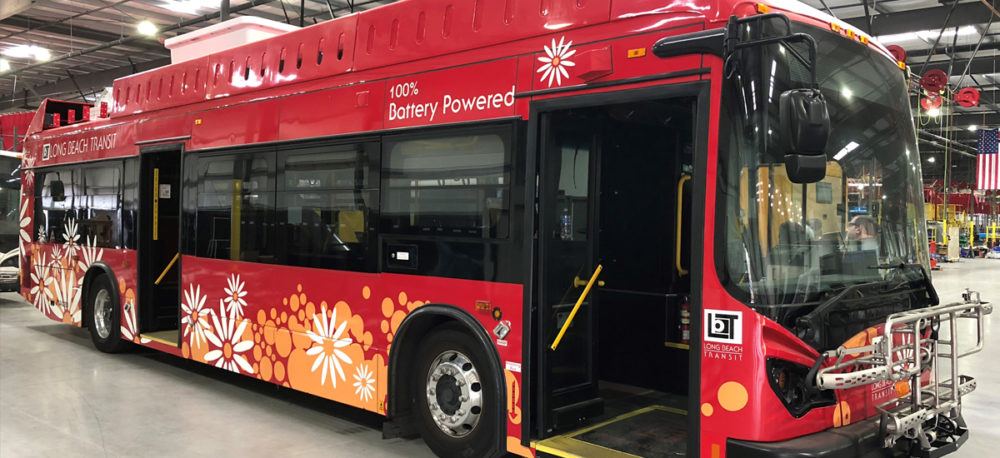What do the Super Bowl, national parks, and California mayors have in common? If you guessed electric buses, you’re right.
This Sunday, electric buses will shuttle people to and from downtown Minneapolis, another example of this technology being adopted in cold climates. Elsewhere, Zion National Park recently completed a 3-month trial of electric buses and Yosemite recently became the first national park to purchase electric buses.
And yesterday, 16 mayors wrote members of the California Air Resources Board (CARB) urging them to accelerate the deployment of zero-emission transit buses in cities across the state.
Whether in Minnesota, Utah, or California, electric buses offer significant benefits for air quality and climate change compared to diesel and natural gas buses. And the impacts of pollution from heavy-duty combustion vehicles are large, despite these vehicles making up a small fraction of vehicles on the road. This is one reason so many cities across the country are beginning to adopt zero-emission buses.
Mayors standing up for the people’s electric vehicle
The mayors’ letter comes as CARB has proposed a timeline for phasing in zero-emission buses across the state. This proposal has been met with pushback from the natural gas industry, which has more than 50 percent market share of buses in the California transit industry, the result of natural gas buses being the only alternative to diesel for many years.
Mayors writing CARB are from cities large and small across the state and represent nearly 8 million Californians. The letter follows a pledge made by 12 mayors of major cities across the world to buy only zero-emission buses from 2025 and on. And as attention focuses on the State of the Union address tonight, California mayors’ call for action on zero-emission buses highlights the important role cities and local governments play in air quality and climate change.
Zero-emission technology is here and ready

Mayors from 16 cities wrote the California Air Resources Board asking for strong action on zero-emission buses.
Commitments to zero-emission buses are achievable due to rapid advances in battery and fuel cell technologies and the increasing cost effectiveness of these vehicles. Zero-emission buses have fuel efficiencies many times greater than combustion technologies, in some cases as much as eight times better; ranges of more than 200 miles; and total costs of ownership that are competitive with diesel and natural gas vehicles.
California’s current state budget provides at least $35 million to offset the incremental purchase costs of zero-emission buses. Transit agencies are also likely to significantly benefit from proposed investments by Southern California Edison ($554 million), Pacific Gas and Electric ($210 million), and San Diego Gas and Electric ($150 million) to provide charging infrastructure for heavy-duty electric vehicles such as buses.
Regarding performance, this past week I rode on a battery electric bus that traveled 300 miles in one day, complete with stop and go LA traffic, long grades uphill, and over 50 people on board. The bus was able to recharge in just a few hours.
Perhaps the biggest testament to the readiness of battery electric buses is the large-scale deployment of these vehicles in China: 115,00 were sold in 2016 and 90,000 were sold in 2017. Shenzhen’s entire 16,000 bus fleet recently reached full conversion to electric buses, which is more than all the transit buses in California (~10,000).

The range of zero-emission buses is farther than you may think.
What’s being proposed by CARB?
CARB’s proposal calls for 25 percent of new bus purchases to be zero-emission vehicles beginning in 2020; 50 percent in 2023; 75 percent in 2026; and 100 percent in 2029. Transit agencies with 30 to 99 buses don’t have to comply until 2023 and transit agencies with less than 30 buses don’t have to comply until 2026. CARB’s proposed standard rewards transit agencies that have been early adopters of zero-emission buses by extending their eligibility for purchase incentives.
It is important to put purchase standards in the context of fleet turnover, which is about 14 years per bus, or an average of 7 percent annually. This means a purchase standard of 25 percent would result in roughly 2 percent of the overall fleet being converted to zero-emission vehicles. With 14-year vehicle turnover rates, CARB’s proposed timeline of 100 percent of purchases by 2029 would actually make it difficult to achieve the goal of all transit buses being zero-emission by 2040. And while standards beginning in 2020 may seem soon, this timeline ensures the transition is gradual.
The importance of clear targets
While CARB has yet to implement standards for zero-emission transit buses, it has been developing the most recent version of these targets over the last two years; previous versions of this standard that were never implemented date back 10 years, before zero-emission technology was at the scale it is today.
Several transit agencies have already made commitments to fully convert their fleets to zero-emission buses. The possibility of action by CARB has likely played a role in many of these decisions. In a recent report outlining its goal to adopt 144 zero-emission buses by 2032, Alameda-Contra Costa Transit District (AC Transit) cites CARB’s intended standard of all zero-emission transit buses by 2040 as a motivating factor in developing its plan.
In all, buses are an important step in extending zero-emission technologies to other types of heavy-duty vehicles. Leadership from California mayors and CARB on transit buses will set us on the right path for reducing emissions from school buses, delivery trucks, beverage trucks, port trucks, and more. If your mayor wrote CARB asking for action on zero-emission buses, send them a note or tweet to thank them. And if they aren’t on the letter, talk to them about the importance of zero-emission transit buses and ask them to support their deployment in your community.

